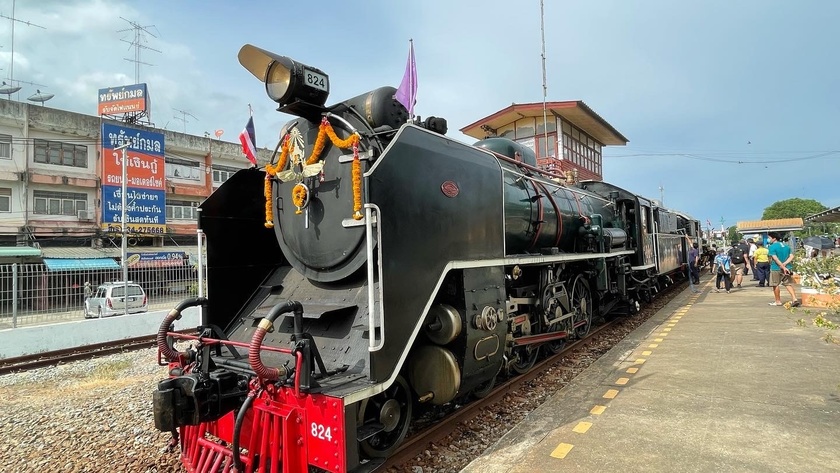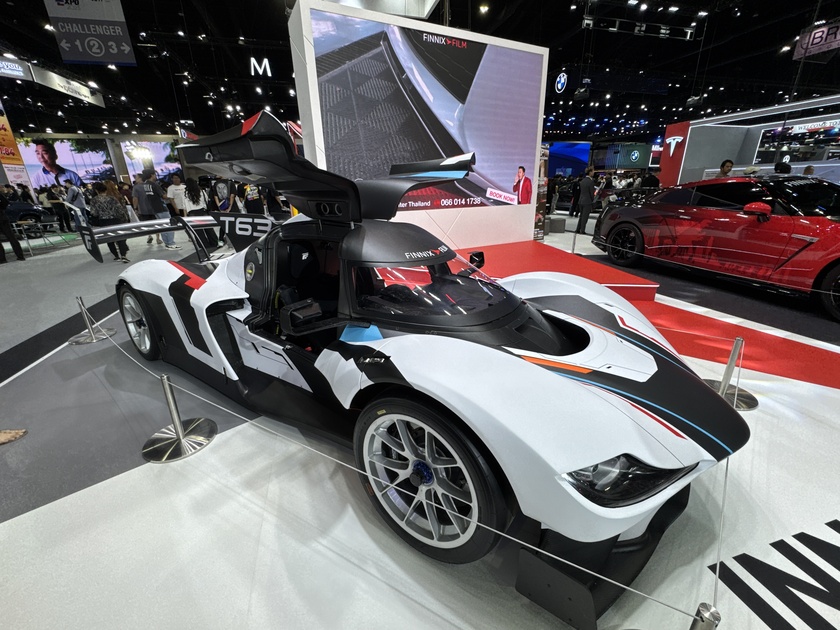The State Railway of Thailand (SRT) hasn’t used steam locomotives for regular commercial use since the early 1980’s. There are five that are still in good working order and are used during special occasions. They have two Pacific locomotives, two C56 locomotives and one Mikado locomotive.
Each year the SRT organise six steam train trips every year. Tickets cost 299 Baht. You can buy at any station or online a month in advance. The trips alternate between Ayutthaya, Nakhon Pathom, and Chachoengsao.
The trains that are used usually are two Pacific locomotives. Number 824 (imported in 1949) and Number 850 (imported in 1951). These were manufactured by the Japan Association of Railway Industry and there were originally 30 of them in Thailand, Numbers 821-850. They were designed with 4-6-2 wheel configuration. In 2012, they were completely restored and modified. They had a new boiler, electric generator, and genset air compressor fitted.
The train is a great way to spend a day. The reactions from everyone, from the people on the train to locals that line the tracks to see the antique steam engines, is worth the small cost of the ticket.
After arriving in Nakhon Prathom six hours are scheduled to explore the 110 year old downtown market as well as the first class temple and 120 meter tall Nakhon Prathom Chedi.
Wat Metta Dharma Bodhiyan (Wat Mettatham Phothiyan) Kanchanaburi Thailand
Due to its amazing 12 meter tall Guan Yin Bodhisattva statues carved in teak wood, this fairly recent temple quickly became the most famous Chinese temple in Kanchanaburi.
The covered courtyard which welcomes you does not suggest what you are going to discover inside: a hall with all the partitions and ceilings in carved teak wood. In the middle of which enthroned, back to back, are the 4 statues of the chinse goddess with 18 arms and a thousand smaller arms with a thousand eyes.
In the peripheral corridors, dozens of unique statues are also made of carved wood. Wat Mettatham Photiyan is set to expand to accommodate even more statues. Hundreds more are already stored to the right of the main hall and are waiting to be installed in the new temple buildings.
In addition to one of the most amazing wooden statues you will ever see the temple is currently building a 165 meter tall, with a base of 108 meter, Buddha Statue. ...
One of the most delightful flower festivals in Thailand, the Suanluang Rama IX Flower Festival is taking place again this year from 1-10 December, 2024. In addition to countless flowers the park hosts a floating market offering trafitional foods and crafts in cooperation with the TAT.
Suan Luang Rama IX สวนหลวง ร.๙, also referred to as King Rama IX Park, is a public park in Bangkok's Prawet District. With an area of 500 rai (200 acres), it is the largest park in the city.
The park was built to celebrate King Bhumibol Adulyadej's sixtieth birthday in 1987, and was opened by the King on 1 December that year. It features extensive botanical gardens, a lake, and a pavilion housing exhibits in honor of the King.
It is a beautiful area and a great break from the hustle and bustle of the city. The park is a great green spot to enjoy the wildlife and nature of the tropics. Countless flowers and trees are there to be photographed.
Suan Luang Rama IX Flower Festival 2025 - ...
The 42nd Thailand International Motor Expo 2025
The Thailand International Motor Expo (commonly known as Motor Expo) is Southeast Asia’s premier automotive showcase, featuring the latest in cars, motorcycles, boats, aircraft, motorsport gear, auto parts, car audio, and accessories.
The 2025 edition, themed “The Magnificent Motor Expo,” runs from November 29 to December 10, 2025, at IMPACT Challenger Halls 1–3 in Muang Thong Thani, Nonthaburi (a northern suburb of Bangkok). With over 42 brands from 8 countries participating, it’s a massive event that attracts around 1.5–2 million visitors annually, blending cutting-edge tech, test drives, and exclusive deals.
Over 42 automotive brands, including AION, Audi, BMW, BYD, Chery, Ford, Honda, Hyundai, Isuzu, Jeep, Kia, Lexus, Mazda, Mercedes-Benz, MG, Mitsubishi, Nissan, Porsche, Suzuki, Tesla, Toyota, Volvo, and Chinese EV giants like XPeng and Zeekr. Plus, independent tuners like M’Z Speed for custom mods.
Heavy emphasis on electric ...




















































